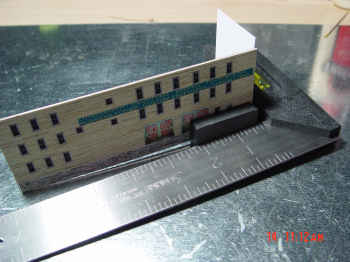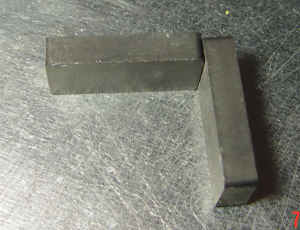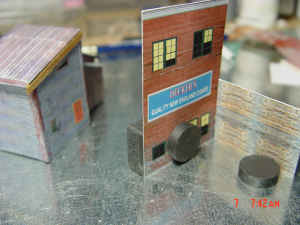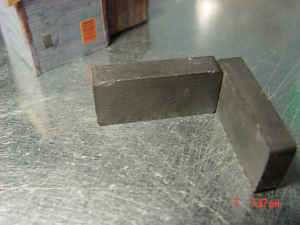|
Magnetic Hands Help Perfect CornersI used to do it with my hands, but there is a better way and it is more precise. It took about $10 $5 for a sheet of steel and another $5 for magnets (I have since spent another $10 on magnets, but it has been worth it.
The steel is about 1/32nd about 2 feet in length and a food wide and makes a good working surface for my modeling table. It resists all kinds of cutting impellents knives, Xacto blades and Dremel cut off blades. But its main purpose is keeping building walls square. The first magnets I got are an 1.75” long, .75” wide and 3/8ths thick, but set them down on that sheet of steel and it will snap it right out of your fingers. That magnet has bite! I place a second on the steel perpendicular to the first to form a 90-degree angle. That forms the framework for gluing two wall sections at an exact right angle. Neat.
By sanding wall edges to a 45-degree angle it is easy to obtain a sharp 90-degree angle for buildings by using the magnets as a gluing jig to hold the corners together until the glue has a chance to set. This jig works best using large (more powerful) magnets to hold the walls in tyhe right position and small circular magnets to hold the walls tight against the more powerful magnets. I have found a number of magnetic uses for this gluing jig, but combining it with the 45-degree clamp results in an almost seamless corner joint for model railroad buildings. |








